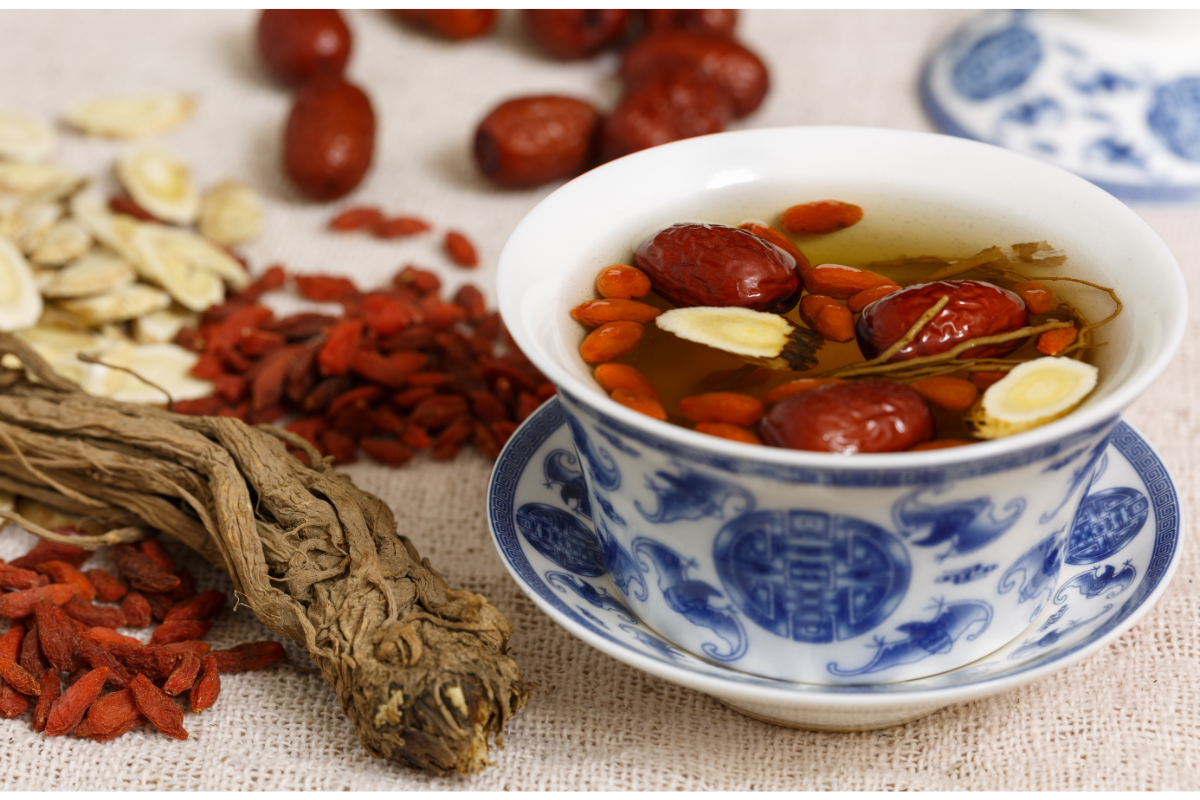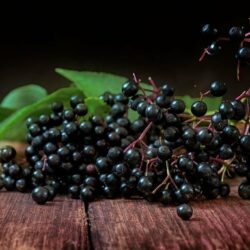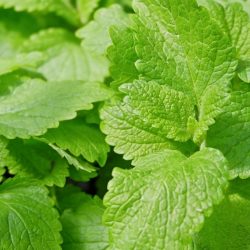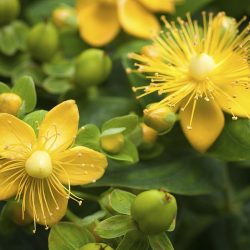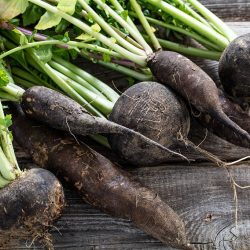In the vast expanses of nature, a discreet but extraordinary plant has captivated the attention of researchers and wellness enthusiasts for centuries: astragalus. Nestling in the heart of the Fabaceae family , this remarkable herb is much more than just a plant. It embodies the fascinating concept of the adaptogen. With its unique properties and traditional uses deeply rooted in different cultures, astragalus is attracting growing interest in the world of scientific research and alternative medicine.
What is Astragalus?
Astragalus is a member of the Fabaceae family and the genus Astragalus. They constitute an exceptionally rich floristic family, encompassing more than 2,500 species. It is the most diverse of the Spermaphytes. The Tragacantha subgenus , known for producing tragacanth gum, was once distinguished by forming the Astracantha genus . Research carried out by S. Zarre and D. Podlech in 1997 led to its reintegration into the genus Astragalus.
Astragalus species come in a surprising variety of annual or perennial, herbaceous or bushy forms. They are adorned with hairs, spines or even no hair at all. Their leaves are generally pinnate, with a variety of leaflets. Inflorescences in clusters emerge from axillary buds. This offers a range of pedunculated or sessile configurations.
The biology of Astragalus is further revealed by its floral characteristics . These include a bell-shaped calyx, an asymmetrical corolla and ten stamens. The pod, a typical Fabaceae fruit, undergoes a transformation with the emergence of a longitudinal false wall. This gives the plant a unique morphological appearance.
Its cylindrical roots are included on list A of medicinal plants in the French Pharmacopoeia. They play a crucial role in traditional Chinese medicine.
Rooted in regions ranging from Siberia to China, this perennial plant thrives in temperate biomes, from steppes to mountainous areas, at altitudes of between 800 and 2,000 metres. Astragalus is cultivated in various Chinese provinces for its medicinal roots. Mongolian astragalus offers a fascinating insight into the harmonious marriage between botany, traditional medicine and biodiversity.
Traditional use of Astragalus
The roots of two related species,Astragalus mongholicus and Astragalus membranaceus, play a key role in Chinese pharmacopoeia. They are known as huangqi (黄芪), with an older spelling 黃耆. This term, in both Chinese and French, has multiple meanings depending on the context. It can refer to the plant itself or to the portion of the plant specifically used for medicinal purposes.
These roots, the jewels of traditional Chinese medicine, represent an essential therapeutic resource . They underline the convergence between botanical wealth and ancestral medicinal wisdom. Indeed, beyond its linguistic role, huangqi embodies the link between nature and health. It symbolises the tireless quest for harmony between man and his environment. Practitioners of traditional Chinese medicine draw on centuries-old knowledge. They exploit these roots for their medicinal properties, anchoring contemporary practice in a thousand-year-old tradition.
What is TCM?
Traditional Chinese medicine (TC M) represents a rich and diverse body of health theories and practices spanning the history of the Chinese world. It includes the oral, folk, magical and religious traditions of the various ethnic groups and communities that make up the Chinese world. TCM also refers to a body of texts dating back to approximately the fifth century B.C. It occupies a prominent place among the three great traditional learned medicines, alongside Mediterranean Galenism and Indian Ayurveda.
In the twentieth century, classical TCM evolved to become perceived, to a greater or lesser extent recognised, as an alternative or complementary system to modern medicine. As such, it comes under the heading of non-conventional medicine. This discipline encompasses various practices such as pharmacopoeia, massage, energetic exercises, dietetics, acupuncture and moxibustion.
The very definition of traditional medicine is open to debate. The WHO describes it as the sum total of knowledge, skills and practices, based on the theories, beliefs and experiences of different cultures. Traditional medicine can vary from practices based on oral tradition to those based on learned texts. In the specific case of Chinese medicine, it takes two forms: popular medicine rooted in family recipes and magical practices, and classical medicine based on a rich body of literature, embodied by medical officers of the Chinese administration.
In order to better understand Chinese medicine as a whole, contemporary researchers such as Paul Unschuld insist on the idea of medical systems. He sees TCM as a combination of different approaches over the course of Chinese history. Thus Chinese medicine, far from being homogeneous, appears to be a patchwork of different medical systems, each of which has played a role in the health of populations over the centuries.
Astragale and Traditional Chinese Medicine
Astragalus root collectors operate over a vast territory. They use many different local names. Being in contact with 472 botanical species of Astragalus in China, it is legitimate to wonder how they manage to systematically harvest the same species. Despite modern scientific recognition of Astragalus mongholicus and A. membranaceus as the best medicinal species, traditional Chinese pharmacopoeia attaches crucial importance to the origin and appearance of the part of the plant used.
Throughout the rich history of Chinese subject books (本草 běncǎo), which have no equivalent in Europe, empirical knowledge and scholarly insights have been passed on in a variety of ways. These included medicinal plant harvesters (采药师 caiyaoshi), who passed on their experience from master to pupil. Apothecaries and doctors, on the other hand, relied on scholarly works on medical subjects.
Astragalus is mentioned in the first Chinese medical text, the Shennong bencao jing. It is classified as a medicinal substance with a “sweet, slightly hot, non-toxic flavour”. The crucial information on harvesting was based on practical knowledge, distinguishing the right plants rather than botany.
Despite reaching its apogee with Li Shizhen’s Bencao gangmu in 1593, which compiled sixteen centuries of medical material, the excessive accumulation of detailed information without an explicit empirical basis sometimes hampered critical analysis.
In modern medicine, the astragalus root, Huangqi, is used for its beneficial properties. It invigorates qi by consolidating defensive qi. It improves diuresis. Astragalus may treat skin infections by regenerating the tissues. The Buzhongyiqi tang formula, representative for toning the body, shows modern pharmacological effects such as anti-cancer, anti-ageing, immunomodulation and anti-inflammatory effects. However, challenges persist in the validation of clinical trials in traditional Chinese medicine. In China, astragalus root is also used for preventive or maintenance purposes. This underlines its continuing role in preserving health according to the age-old perspective of Chinese medicine.
What are the properties of this plant?
Traditional Chinese medicine attributes to astragalus the power to strengthen the immune system, as confirmed by various evaluations. Astragalus root has been shown to boost the overall immune response. It also has anti-allergic properties, reducing inflammation and hyper-reactivity of the airways in allergic asthma. In a mouse model of allergic rhinitis, it reduces the secretion of inflammatory cytokines. Double-blind trials on 48 patients confirmed a reduction in the intensity of rhinorrhoea. Its use stems from its beneficial immune effects in respiratory allergies and the prevention of recurrent infections.
Actions on the respiratory tract
Astragalus root has a special place in the pharmacopoeia of Traditional Chinese Medicine (TCM), renowned for its preventive action against respiratory infections. At the heart of this age-old medicinal tradition, astragalus is often the main ingredient in preparations such as Yu Ping Feng San (Wan). This remedy is frequently used to treat a range of respiratory ailments, from allergic rhinitis and chronic bronchitis to influenza and recurrent colds.
TCM considers astragalus to be a valuable ally in the fight against diseases affecting the respiratory tract, particularly bronchitis, colds and allergic rhinitis. It is even said to have anti-asthmatic properties. These benefits are often combined with the plant’s antibacterial and antiviral properties.
When the first symptoms of a respiratory infection appear, TCM recommends early use of astragalus. It can be taken as a decoction or incorporated into culinary preparations. This proactive approach is particularly recommended for strengthening the respiratory system and preventing infections. It offers a beneficial solution, particularly for individuals with particularly sensitive ENT tra cts.
The use of astragalus in TCM is therefore part of a holistic approach to health. It focuses on preventing disease and strengthening the body’s natural defences. This philosophy is reflected in the recommendation to prepare decoctions as soon as the first symptoms appear. By incorporating this practice into daily life, particularly during sensitive periods, astragalus can play a significant role in maintaining optimum respiratory health.
Stimulation of the immune system
Astragalus, reputed to be ‘the plant of immunity’, is not just a traditional herb in Chinese medicine. It is also recognised for its beneficial effects on the immune system. This plant plays an essential role in stimulating the immune system, particularly when it shows signs of disruption associated with ageing, known as immunosenescence. The polysaccharides present in astragalus boost the body’s immune response. This gives the plant anti-viral properties that prevent viruses from integrating into cells.
In traditional Chinese medicine, astragalus is often included in preparations designed to boost the immune system of people weakened by illness, ageing or fatigue. For example, Bu Zhong Yi Qi Tang, a traditional preparation, features astragalus root as the main ingredient to treat a variety of conditions such as low energy, fatigue and a weakened immune system. It is targeted at groups such as convalescents, the chronically ill, women suffering from post-partum depression, and the elderly.
Trials in China have indicated that astragalus, by stimulating the immune system, can protect cancer patients against opportunistic infections. The results of animal research and preliminary clinical data suggest that this plant activates the production of immune system cells in healthy subjects. This is because it contains a cocktail of immunostimulant active ingredients, such as antioxidants, polysaccharides, flavonoids and trace elements. Astragalus acts synergistically to activate the production of B and T lymphocytes, boosting the body’s ability to defend itself against viruses, microbes and bacteria. These immunostimulant properties help to reduce the body’s vulnerability to these attacks and preserve its overall health.
General tonic and anti-ageing
Astragalus, a Chinese plant known as ‘Huang qi’, is a real source of benefits for the body. Endowed with adaptogenic properties, this plant combats fatigue and stress. It also strengthens the immune system. Its many positive effects extend far beyond this, including anti-ageing virtues explored thanks to its specific compounds.
Saponins, in particular astragaloside IV, are among the constituents of astragalus that are attracting the attention of researchers for their alleged anti-ageing properties. This molecule stands out for its role in activating telomerases, crucial enzymes that lengthen telomeres, the DNA sequences that protect chromosomes. By promoting this action, astragalus counteracts the shortening of telomeres associated with cell ageing, offering a defence against age-related cell death.
The flavonoids contained in astragalus complement this anti-ageing action by acting as antioxidants, neutralising the free radicals responsible for oxidative stress and cell ageing. Astragaloside IV, in particular, extends its benefits to the cardiovascular system, preserving heart function.
Recognised as an adaptogenic plant, it helps combat chronic fatigue and stress, and is beneficial to the immune system. Its use is recommended in periods of overwork, during examinations, for sportspeople to improve performance, and even to prevent stressful situations.
Astragalus, rich in vitamin C, potassium, calcium, zinc, iron and magnesium, acts as a general tonic, stimulating the Qi, the vital energy. Its invigorating power and essential nutrients support the body during convalescence, lack of energy and illness. Elisabeth Blackburn, winner of the Nobel Prize for Medicine, has highlighted the link between telomere length, a marker of cellular ageing, and the benefits of Astragalus by activating telomerase, thus demonstrating its powerful anti-ageing action.
Cancer adjuvant
Other properties
The anti-ageing benefits of astragalus also extend to the cardiovascular system, thanks to astragaloside IV, which helps preserve heart function. Astragalus plays a protective role for the kidneys thanks to its anti-inflammatory and antioxidant properties.
By helping to maintain a healthy vascular system, strengthening natural defences and promoting joint mobility and flexibility, astragalus offers a range of benefits. It provides particular support during the menstrual cycle and eases the discomfort associated with the menopause. Its high antioxidant content, particularly flavonoids, appears to counteract the harmful effects of oxidative stress, offering potential protection against the development of cardiovascular disease. The active ingredients in astragalus, assisted by the potassium present in its roots, help to normalise cardiac contractions, thereby combating high blood pressure.
Astragalus also contains additional treasures, such as its anti-inflammatory properties. The active ingredients in astragalus act as TNF inhibitors. This action enables it to combat joint stiffness. This property is useful in diseases such as osteoarthritis, arthritis and rheumatism. Used preventively, astragalus helps to reduce inflammatory flare-ups. It also helps to reduce pain and slow the breakdown of cartilage. This improves patients’ mobility.
In addition, the polysaccharides in astragalus have anti-diabetic properties. In people with type 2 diabetes, it could lower blood sugar levels. It also improves insulin sensitivity. This helps reduce hyperglycaemia.
How can it be used?
To use astragalus, a user must choose from several forms such as capsules, liquid extracts, powders, or as an ingredient in herbal teas. Dosage depends on the form chosen and should be adapted to the age, state of health and specific needs of each individual. It is crucial to follow the manufacturer’s instructions or consult a health professional to determine the appropriate dose.
What dosage should I choose?
Astragalus supplements are mainly available as root powder, solid extracts or non-standardised tinctures. Where standardisation is concerned, there is some discrepancy. Some manufacturers offer extracts standardised for astragalosides, polysaccharides or flavones.
In Chinese herbal shops, astragalus is sold in the form of dried roots cut into thin slices. These slices are used to prepare decoctions, soups or broths. Directions for use include:
- Root powder: take 4 g to 7 g of root per day in 2 or 3 doses.
- Dry extract (1:8): take 250 mg, 2 to 3 times a day.
- Tincture (1:8, in alcohol): take 2 ml to 4 ml, 3 times a day.
- Decoction: boil 15 g to 30 g of dried root in 1 litre of water over a low heat for 10 to 15 minutes, then drink 500 ml to 1 litre a day.
For liquid forms, we recommend :
- Infusion: 1 teaspoon per cup, infused for 10 minutes in water, 2 to 4 cups a day.
- Standardised fluid plant extract: 5 ml 2 to 3 times a day in water.
- Mother tincture, fluid extract: 15 to 30 drops per dose 1 to 3 times a day in water.
For the dry form of astragalus, including dry extract, powder in tablets or capsules, the recommended doses vary. They range from 200 to 1000 mg. The usual dose is one capsule taken 2 or 3 times a day. It is important to refer to the manufacturer’s recommendations for the precise dosage.
Astragalus can be combined beneficially with other plants. For example, with plantain and blackcurrant, it is used in cases of allergic asthma or rhinitis. Similarly, in combination with cypress and elderberry, astragalus helps to strengthen the immune system and prevent infections.
What are the side effects?
Taking 60 grams of astragalus a day is generally safe for up to 4 months. However, studies have not assessed safety at higher doses or for longer periods. As a general rule, astragalus supplements lack the evidence to establish an optimal dose, unlike prescription drugs.
There are insufficient studies on astragalus in pregnant or breastfeeding women or children. It is therefore not possible to draw any conclusions about the safety of this plant for these groups. Astragalus is reputed to stimulate the immune system. This could be problematic for those suffering from autoimmune diseases. These include lupus, rheumatoid arthritis and multiple sclerosis.
What are the precautions for use?
Sources
- http://powo.science.kew.org/taxon/478720-1
- https://www.frontiersin.org/articles/10.3389/fphar.2020.00349/full#B163
- https://www.msdmanuals.com/fr/accueil/sujets-particuliers/compléments-alimentaires-et-vitamines/astragale
- https://dumas.ccsd.cnrs.fr/dumas-03102160v1/document
- Zhang Z, Zhang L, Xu H. Effect of Astragalus polysaccharide in treatment of diabetes mellitus: a narrative review. J Tradit Chin Med. 2019 Feb;39(1):133-138. PMID: 32186034.
- https://www.sciencedirect.com/science/article/abs/pii/S0378874122011254?via=ihub

